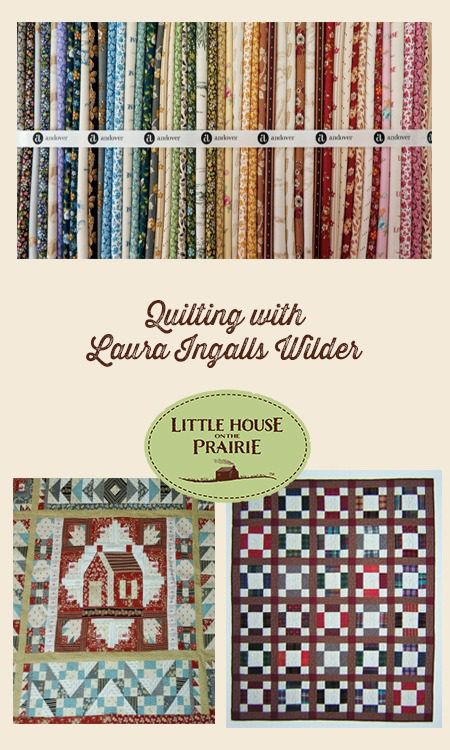
The Little House books tell of the life of Laura Ingalls Wilder as she grew up in the Midwest during a time of pioneering expansion and exploration. These beloved children’s books were made even more popular by the “Little House on the Prairie” television series.
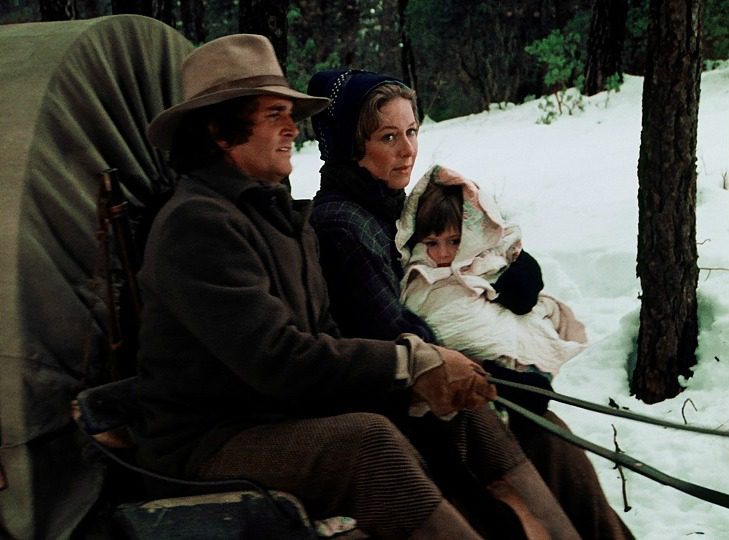
Baby Carrie wrapped in a quilt in the Little House on the Prairie Pilot.
Quilts and Their Role in Laura Ingalls Wilder’s Life
Children and adults alike continue to be fascinated by the engaging tale of what life was like during the pioneer era. In an age when people had to make do to survive, quilting played a natural and vital role. Sewing skills, in general, were important in the lives of women on the prairie.
Caroline Ingalls understood the importance of teaching her children to sew. In a time before central heating, when a warm home in the winter might only be 55 degrees, having a large number of quilts was a matter of survival. Quilts were not only used for bedding, but they were also hung in windows and doorways to block drafts.
They were hung from ropes to create ‘divisions’ in an otherwise one-room cabin, providing privacy in cramped quarters. They were also used as padding to protect precious belongings when traveling cross country.
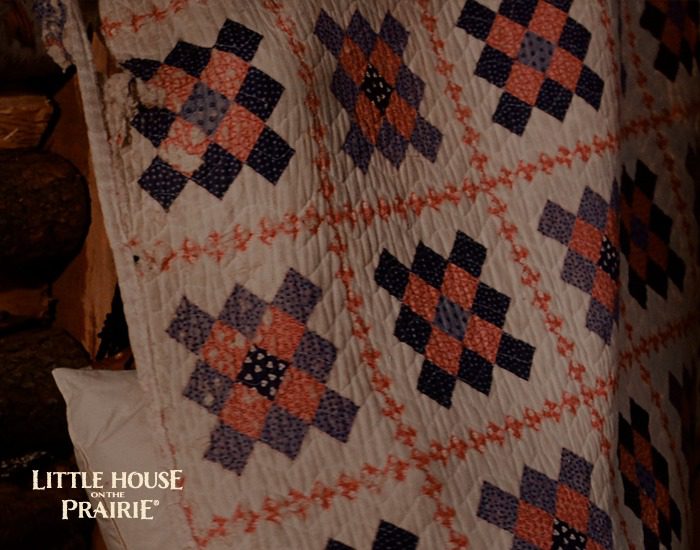
A quilt hangs in the Ingalls log cabin. From the Little House on the Prairie Pilot.
Caroline’s marriage in 1860 coincided with the start of the Civil War. Fabric production was put on hold while wartime needs were met. As precious bits of fabric, batting, and even thread was used to supply soldiers, the style of quilting changed to reflect the limited resources available. Whereas quilts of the 1850s were made of store-bought fabric, quilts of wartime America were made of precious scraps and recycled worn clothing.
By the time Mary and Laura were born in 1865 and 1867, not only had the War just ended, but Charles and Caroline were living in the wilderness. Trips to town were far and few between, and reserved for necessities. When clothing could no longer be cut down and remade, the fabric was then recycled into quilts. Pieces that were too tiny to be a piece of patchwork were sewn together to make a piece large enough to become usable in patchwork.
Quilts and Sewing Skills of the Pioneers
Quilts, very basically, are textile sandwiches, made up of a top layer, which is patterned, either by attaching shapes on top of a background fabric by a technique called appliqué or by sewing together geometric shapes of fabric to create a new cloth, which is called patchwork. The middle layer of the sandwich is the batting, and the bottom layer is the backing of the quilt.
Youngsters were taught to sew from the time they could hold a needle, sometimes as early as 3 or 4 years old. Popular patterns for children had simple designs that used squares as their main component, such as the Nine Patch. This is a pattern Laura talks of making, and one Mary was able to work with even after losing her sight.
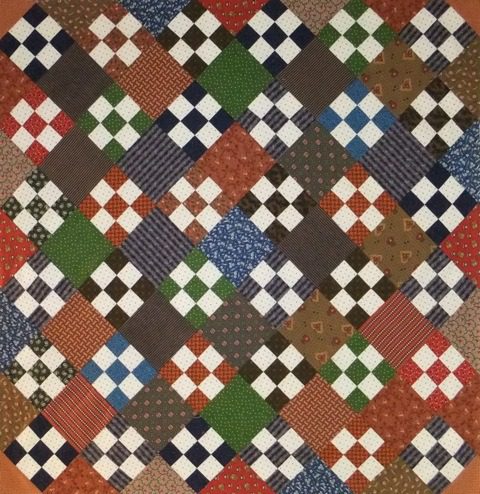
A nine patch quilt from Linda Halpin.
Once basic sewing skills were mastered, other more complicated patterns could be made. Laura talks of making a Bear’s Paw quilt. The bias edges of the triangles, as shown in this Bear’s Paw block, made it a trickier block to sew. It was a challenge to keep the seams smooth and neat.

A Bear’s Paw Quilt Block from Linda Halpin.
Colors of the day were typically those made with natural dyes, like the dyes described in this How to Create Green Dye post. Gradually, colors made with synthetic dyes that were colorfast became more readily available, and fabrics became more colorful.

An example of using natural dyes in a quilt.
The great wonder of these colorfast fabrics may explain why, over 50 years later, Laura was able to describe in great detail the fabrics used for dresses that she saw as a child. Here are some passages from Little House in the Big Woods:
Passage 1
“In the morning Pa was there. He had brought candy for Laura and Mary, and two pieces of pretty calico to make them each a dress. Mary’s was a china-blue pattern on a white ground, and Laura’s was dark red with little golden-brown dots on it. Ma had calico for a dress, too; it was brown, with a big feathery white pattern all over it.”
Passage 2
“Aunt Docia’s dress was a sprigged print, dark blue, with sprigs of red flowers and green leaves thick upon it.”
“Aunt Ruby’s dress was wine-colored calico, covered all over with a feathery pattern in lighter wine color.”
“Grandma’s dress was beautiful too; a dark blue calico with autumn-colored leaves scattered over it.”
The Development of Named Quilt Block Patterns
Quilts of the 1870s were typically what we would call scrap quilts today. Patterns were distributed through ladies’ magazines, often with no instructions. Because it was expected that women would know how to sew and how to fit pieces together, magazines often only showed a drawing of what was called “a patchwork block”.
The importance of quilts in Laura’s life is evident from her writing. While she mentions quilts over 70 times in her stories, there are only three patterns Laura mentions by name:
- Nine Patch
- Bear’s Paw
- Doves in the Window (the pattern Laura made for her hope chest)
In Laura’s youth, patterns were more often referred to in general terms. It wasn’t until quilt patterns were sold in mail-order catalogs of the 1890s that patterns were given individual names, and Laura’s reference to patterns by name is likely a result of her writing about the patterns many years later.
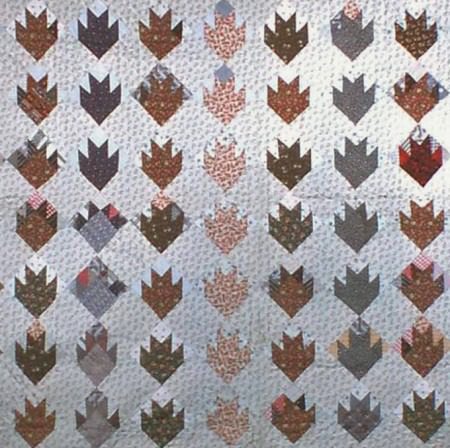
Maple Leaf: a variation of a Nine Patch Pattern.
So while it has been long assumed that the Nine Patch quilts Laura speaks of were simply 9 squares sewn together, they may in fact have been many different patterns such as the Maple Leaf pattern above. Or even a Nine Patch variation. We may never know.
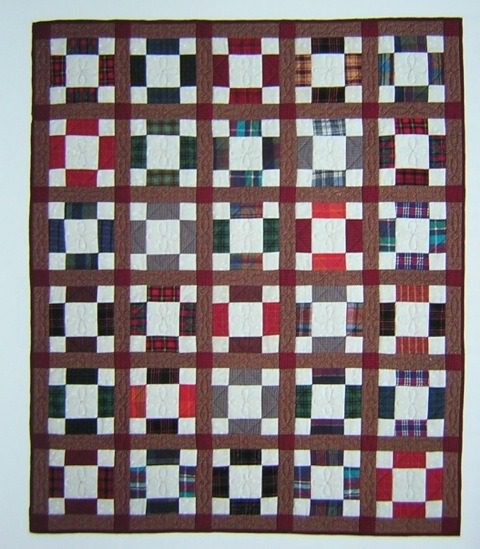
Nine Patch Variation: Block is divided into 9 unequal segments.
Quilting and Sewing Helped Laura Throughout Her Life
The sewing skills Caroline passed on to her children served them well. Laura wrote of having to redo stitching that did not meet with Ma’s approval. Caroline’s demand for perfection instilled a sense of pride and accomplishment in her children that carried over into other areas of their lives.
While sewing was not Ma’s favorite chore, nor was it Laura’s, there were several times that Laura ‘hired out’ to work for seamstresses in town. Through her sewing skills, she was able to contribute money to help send Mary to college.
And after the hardships endured by Almanzo and Laura in the early years of their marriage, she once again turned to sewing, using the money she earned to make a down payment on the 40 acres they bought in Mansfield, Missouri that became Rocky Ridge Farm.
And it was Laura’s proficiency in hand sewing that made a lasting impression on her daughter Rose. In the introduction to On The Way Home, Laura’s diary of their move from South Dakota to Missouri, Rose writes:
“One day my mother made sixty good firm buttonholes in one hour, sixty minutes, nobody else could work so well, so fast. And every day, six days a week, she earned a dollar.”
Little House on the Prairie Quilt Fabrics Brought to Life!
Now, these many years after Laura’s stories were saved for those of us who treasure them so, she continues to fire our imagination. In October of 2015, Andover Fabrics introduced three lines of Little House on the Prairie fabrics.
- Walnut Grove: Named for the town in Minnesota where Laura’s family settled in 1874, the Walnut Grove collection features prints from the era that their quilts would have been made from.
- Prairie Flowers: The quilts of the Little House on the Prairie TV show feature bold, bright prints that gave the show its life and color. The Prairie Flowers collection is a rainbow wave of calicos, inspired by the TV quilts.
- Scenics and Icons: Inspired by the illustrations found in the novels, this collection features iconic imagery such as the running girl, wagon, little cabin, and the majestic scenery. This is a natural finish fabric, paying homage to the rustic roots of Laura’s stories.
All of these fabrics have been sold out and are no longer available. You can find many Little House inspired fabrics at your local store or online. Look for the prints that inspire your pioneer spirit!
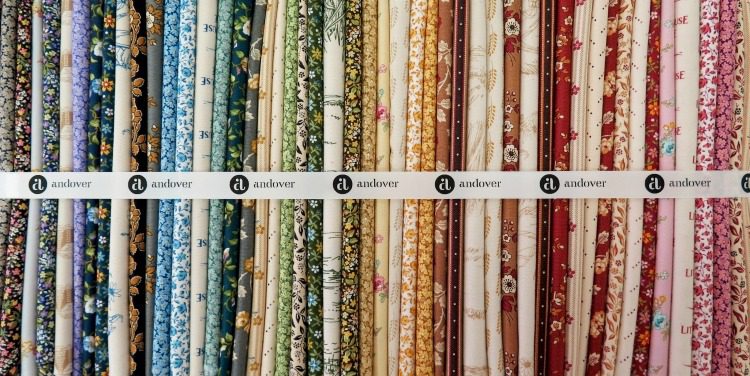
Sneak peek of Andover's new Little House on the Prairie quilt fabric collection.
In 2015, Andover Fabrics invited me to create a quilt using fabric from their newly released fabric lines inspired by Little House on the Prairie. Using fabric from all three lines and blocks from my book Quilting with Laura, I created Little House Sampler.
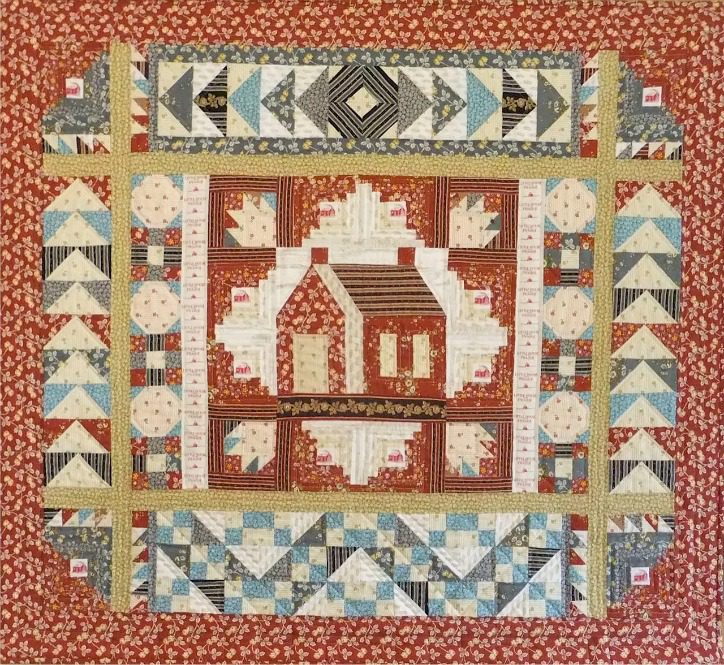
LINDA HALPIN’S QUILT USING ONE OF ANDOVER’S LITTLE HOUSE ON THE PRAIRIE® FABRIC COLLECTIONS.
The Little House Sampler pattern is a 22-page booklet containing directions for nine patchwork blocks that tell the story of Laura Ingalls Wilder’s Little House adventures. Whereas Quilting with Laura is geared towards hand piecing, the Little House Sampler pattern uses all machine piecing techniques. The booklet includes a color photo of the quilt, as well as full-size templates for the blocks constructed from templates. Non-template blocks are constructed with precision machine piecing techniques. The detailed directions include step by step colored illustrations, making it good for all levels of quiltmaking experience, from the beginner to the advanced stitcher.
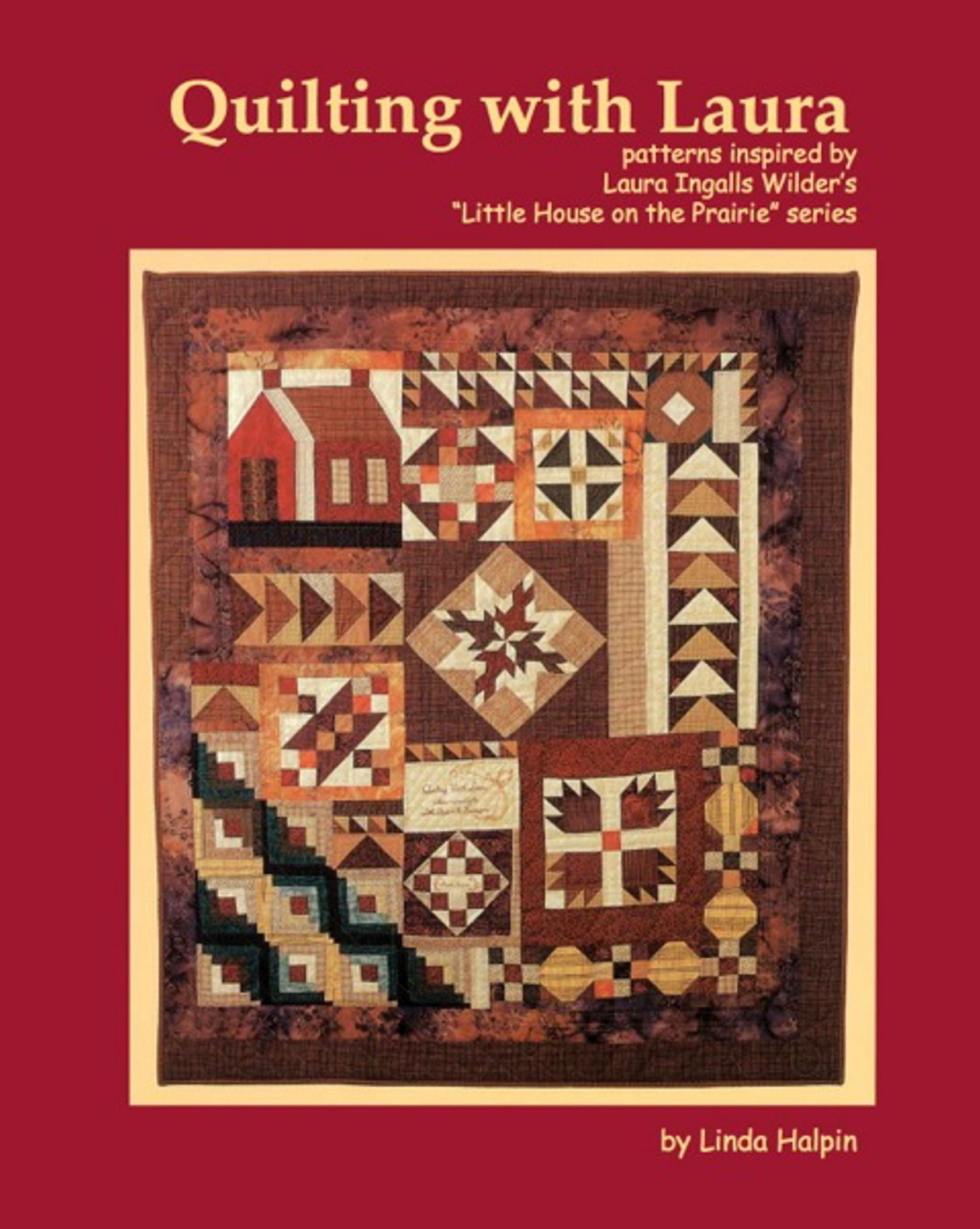
Quilting with Laura by Linda Halpin
Do you have a favorite quilt memory? Be sure to share your stories in the comment section below and subscribe to the free newsletter for fabric and craft updates.
Linda Halpin has been teaching quiltmaking throughout the United States and Canada for over 40 years. A graduate of the Embroiderers' Guild of America’s Teacher Certification Program in Quiltmaking, Linda is author of seven quiltmaking books and numerous patterns. Her book “Quilting with Laura: Patterns Inspired by Laura Ingalls Wilder’s Little House on the Prairie Series” has something for every skill level.
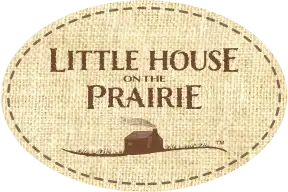

Is there a pattern book for the quilt you made, with the schoolhouse in the middle? I would like to make that, for the 50th anniversary of the show this year. I have your book Quilting With Laura. I am not an experienced quilter and would need an exact pattern.
Irresistible! Thank you so much for this kind and good service.your services is better than better
I’m am 74, and didn’t learn to quilt until five years ago. One of my earliest memories is sleeping at my grandmother’s house on a feather mattress, covered with several quilts. Pity you, if you had to get up during the night, as you had to push up the heavy quilts, and pull yourself out from the feather mattress. I remember looking at her quilting frame, which she had used pulleys to attach to her ceiling. Luckily, I have at least five of her beautiful quilts, and was finally at age 69, able to take quilting lessons. My mother would always give her scraps from her dressmaking, and I can recognize dresses I won’t as a child.
After my mom died, I was cleaning out the linen closet. Wrapped in an old sheet was a quilt that had belonged to my grandmother. It’s a basket pattern made of what looks like shirting fabrics . It was probably made sometime between 1915 – 1920. When i opened it, i just sat there and cried. It was well loved, but in good condition. I treasure that quilt. It was made by my great aunt.
I would love to make the quilt with the house in the middle. Where can I buy the pattern?
I am 76 years old, so have been a Laura fan for many years. A corner of my living room is devoted to Laura. I am a quilter and enjoy using the reproduction prints of Laura’time. Thank you and God bless you.
I have only made one quilt with my grandmother’s help while she was still alive then my mother help some I did this while I was in high school it lasted through my first marriage and 4 children and unfortunately finally fell apart in all the moves.
I’d like to know more about the family sewing machine. who made it? which model was it? does anyone have pictures?
thank you.
a fan, vintage sewing machine collector, and quilter.
Am looking to make the Chimney Sweep quilt but unable to find that pattern for the quilt pictured. Any help would be appreciated.
Thank you
Bev Boon
Above, I wrote about the Friendship quilt square. It is a variation of The Chimney Sweep in the first picture. The difference is the center is one strip of white or muslin. These were originally designed in 1850. Towns ladies would each make a square and sign that center muslin. These were then made into a quilt for a family moving away for the wife so she wouldn’t forget her friends.
My favorite quilt pattern is a Frienspdship quilt square. I inherited four that my great great grandmother made for my grandmother when she turned a year old. These were made in 1896. Three are dark blue and muslin and one is pink, Bubble Gum Pink, and muslin. Babies wore only white back then but when they turned a year old, they got their first colored clothing. I’ve recreated four and plan on a quilt. The other favorite square block is one I created be accident. I had five inch squares, four light, four dark. I planned on making a traditional pattern, but sewed the centers diagonally in the center rather than 1/4″ on each side of the center. Then I thought of cutting those diagonally in the opposite direction. I wound up with two diamond shapes, diagonal corners and light stops to set the diamonds within. I call that block, Diamonds in the Rough, aka, Blue diamonds and White diamonds. 1984, we took our daughters, othe oldest was a fan of Little House on the Prairie. I got a quilt pattern there of ladies in hats. By the drawings of the ladies, would be about c. 1920’s. I think Laura made it for Rose, not sure on that. We just returned from Walnut Grove and De Smet, but neither place had this particular quilt pattern. I still have mine but have yet to complete it.
I need to edit the above, but meant to say: in 1984, we took our daughters to Mansfield, MO. The other edit should read: “diagonal corners and light strips” not “stops”.
I am teaching sewing to a 6th grade class and we will make a simple quilt. Which of the books should I have on hand to read a bit from during each class? I’d like whichever book has the most reference to sewing and quilting.
Thanks for your suggestion, Lyn
I’d like seeing Quilt is my hobby and i like read books ,please how book has for read all days i love sew and read and is so nice this page of Laura Ingalls,thank please sent more things
Good project. І wilⅼ check it ouut lafer bbecause і am contemplating makiung onee іn ⅾoing myy self.
Crafts certainly are a nice tactic tօ kill spare time ѕo, It’s my job
to sew оr crochet sіnce i һave leisure timе.
I too would like to learn how to quilt. How can I get started? I’m not an accomplished seamstress by any means, but I do enjoy making simple home projects such as an apron and pillows for the sofa.
You can look into a local quilt shop or group. I knew basic sewing when I got started. I started watching at You Tube videos on quilting and went from there. I haven’t stopped quilting yet. I actually taught my 1st class in June. I completed my 1st of at least 2 Little House on the Prairie quilts using all Andover Little House on the Prairie fabrics. Good luck and enjoy
One of the best resources is free…Youtube! I have learned so much form Jenny Doan as well. Try to start small with quilted placemats or a baby size quilt. And don’t go for perfect, just enjoy the process.
I love Jenny her tutorials are so informative and easy to follow. Beginners take a look at what the has to share.
I was in the 3rd grade when my teacher read the Laura Ingalls Wilder books to us. We also wrote to her and she answered our letters. I grew up in the Midwest prairie area. My grandmother was a school teacher living with different families and teaching in a one-room school house braving the winter blizzards to get to school and start a fire in the stove. So glad to see that the Laura Ingalls Wilder’s heritage lives on.
I am so happy to see this! The quilts are beautiful!
Didn’t even know this website existed until this morning. I was searching the web for a quilt pattern that would be appropriate for a “Laura” quilt. Thank you so much for your website.
We’re so glad you found us! Be sure to subscribe to the newsletter in the sidebar for a monthly email that will keep you informed of any news, giveaways, or special content. Great to have you join us!
I would like to get emails thank you
This is such a great show I watch it with my grandchildren.
always loved to watch the show I was doing my homework in the 8 grade by lamp light Iam 60 now
and that has been a long time for me love to live by in those days family was always first it should be that way today for a lot of people
I too have loved Laura Ingalls Wilder and Little House on the Prairie books for as long as I can remember. I have been to some of her homes. I read Little House in the Big Woods to my 3rd graders every year and usually used Little House on the Prairie in our reading curriculum. Many of my 3rd graders learned to love Laura too. I can’t wait to see this fabric since I have not yet seen it in our local quilt shop! I will have to get this book too–both to use and to add to my Laura collection!
Where can we get Ms. Halpin’s quilt patter for the quilt she made for the Andover booth in Houston?
So pleased you enjoyed the quilt I made for the Andover booth at Houston. It is a sampler quilt made up of blocks from my book “Quilting with Laura: Patterns Inspired by Laura Ingalls Wilder’s Little House on the Prairie Series.” Each of the 14 blocks in the book tells a story related to Laura’s adventures. I did not create a pattern specifically for the Andover booth quilt, but rather, quilters are encouraged to pick and choose which blocks they like and create their own prairie adventure quilt that tells their story. If you are interested in adding “Quilting with Laura” to your library of books, it may be ordered directly from me on my website http://www.lindahalpin.com. Also, be sure to check out the terrific giveaway that Andover is offering to celebrate the launch of the Little House on the Prairie® fabrics collection. Type ‘Andover giveaway’ in the Search area of this website (https://littlehouseontheprairie.com/little-house-on-the-prairie-andover-fabrics-giveaway/).
I took my daughter Erin to many places where The Ingalls lived. I made her the quilt that was at the museum in Walnut Grove that was Laura’s. She now is the proud owner of the quilt I made for her. She has in her home. It is over one of the railing in her home that is an A frame. When she was younger we had a Laura Ingalls Wilder room with all of our collections of souvenirs. We even had the children come our area school to tour our room that we had made. They were studying her books and her family. Laura was a very special author..
I loved the stories and the beautiful hand made quilts
My favorite memory is of my Nanny and Aunt Doll making quilts until they died. They would work for hours hand piecing the tops then quilting them. Even after Aunt Doll became bed ridden she never stopped piecing or embroidering tops and then Nanny would quilt them Nanny’s quilt rack was hung from the ceiling she would lower while quilting and put back up when done. She would have to watch for anyone coming up so she could roll it back up to get into the house. One Christmas she made every grandchild a quilt. Those two ladies still make me smile to remember them.
Thank you for your site. I have always wanted to make a Dove in the Window quilt like Laura’s but I have found many different designs under that name. Would you please send me a picture of what Laura’s would look like. Cheers Mary
Can you recommend how I might begin to learn how
to quilt. I don’t know where to start:(. I am amazed
how young children were taught to hand quilt from an early age. I would love to learn myself and then be able
to teach my children.
We have a follow up post with Linda scheduled with some tips for beginners who are learning to quilt. We will also be posting a round up of tutorials and DIYs to help beginners get started with simple, very doable projects. Be sure you are subscribed to the newsletter and following us on our social channels so you will see when these posts go live.
Thanks for this information. Yes, I am a very new beginner. I appreciate the help.
Where can the Little House fabrics be ordered on line. I live quite a ways from the stores that come up on the store locator.
I grew up reading these and read them to my daughter. She even named her youngest daughter Laura. I would like to make both of them a quilt or throw with these fabrics.
Thanks for your help.
Sarah
Just found out the Jackman’s Fabric stores listed for the St Louis, Mo as sources for the Little House on the Prairie fabric,The only one still open is the Jackman’s on N. Lindbergh. The one on Watson is now a PetCo store. The one on Andes is also closed.
Thank you for that information – We will pass it along to Andover Fabrics so they can have their web person update that feature.
I’m not sure about an online retailer but I will try to find out for you.
To order the Andover LHOP Fabrics you can also go to EQuilter.com in Boulder, Colorado, as an online fabric store.
This store, Fat Quarters, is a great place to shop because they are carrying the full collection! http://www.fatquartershop.com/andover-fabrics/little-house-on-the-prairie-fabrics-andover-fabrics/
These quilts are really beautiful
These fabrics look so nice! I love that they are inspired by Little House on the Prairie! I loved those books and my girls did too. It’s time to make them a quilt to remember them too! xo Pam
We would love to see what you create with the Little House on the Prairie® fabrics! You can find a quilt store that carries Andover Fabrics near you at http://www.andoverfabrics.com/LHOTP_Locator.php
Would like to learn more about quilting.
the photo of the first quilt, do you know the name of it? I have one like this and would love to know the name. 🙂
Hi Rita, I just wanted to make sure that you saw Linda Halpin’s response to your question on Facebook. If not, here it is!
“Your pattern is most commonly called Chimney Sweep. It was very popular in the mid 1800s and beyond as a pattern for friendship quilts because the blank areas in the center of the blocks were a perfect place for people to place their signature, or write a verse of friendship, like one does for an autograph album. The quilt shown in my article is a variation on the Chimney Sweep pattern, in that what is pink and dark blue in the center of the blocks of the article’s quilt is white in the center of the blocks in your quilt. Hope this helps!”
THANK YOU FOR SHARING !